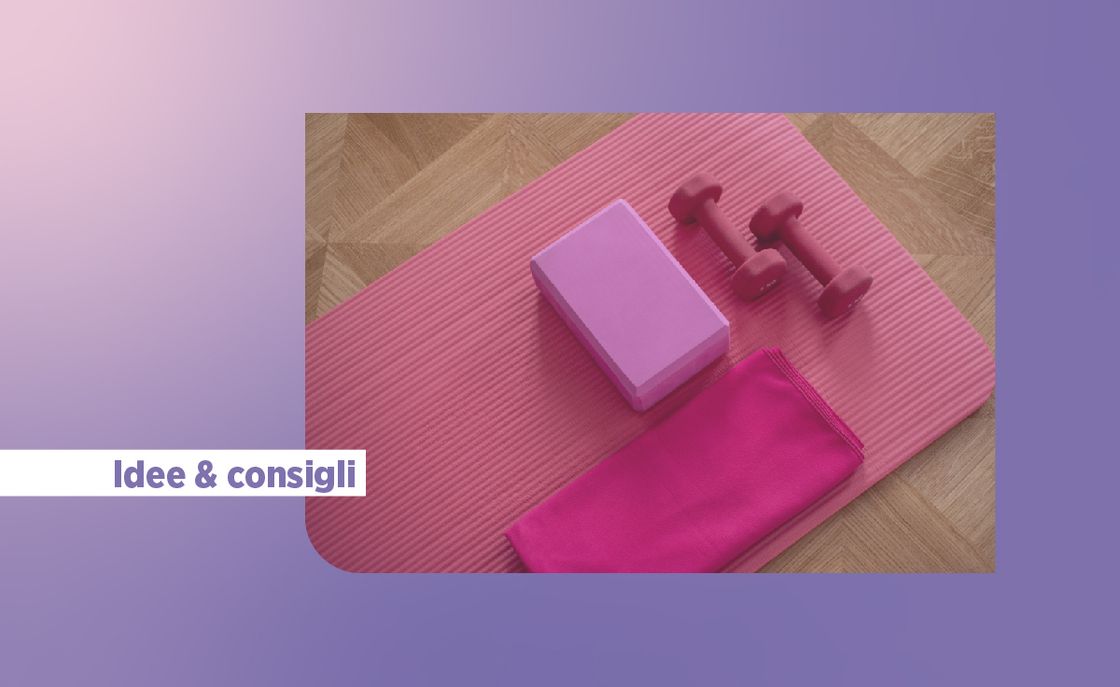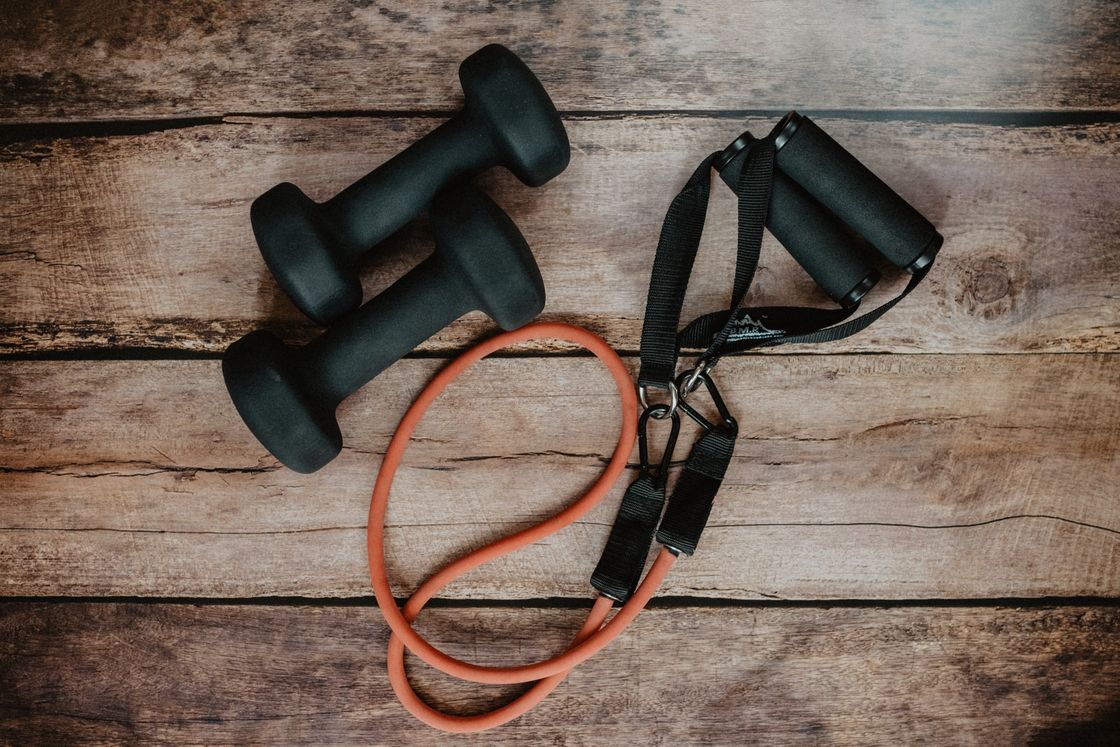Index
[cta-casavo title="Do you want to know the value of your home?" text="It's free and instant."]

Are you intrigued by the idea of a home gym, but you don't know where to start? Don't worry. In this article, you'll find 10 simple steps to best plan your home fitness corner : setting up a home gym will be less painless than a set of sit-ups!
1. DIY home gym? Start with how you train
The first step in setting up your home gym is to identify the basic type of workout you'll do.
If you train with others, you'll need space (and therefore a room large enough to move around without hurting yourself); otherwise, smaller spaces will suffice. The type of exercises is also a factor to carefully evaluate. If your program involves large movements, performed standing or on the move, you'll need to clear the space around you to move freely. On the contrary, all sessions that favor floor repetitions or static exercises require different equipment and environments. Still haven't decided? Try these 5 tests to discover your physical condition, and then ask your doctor and an expert personal trainer for advice.
2. Pros and cons of available spaces
The ideal location for a DIY home gym must guarantee you space, safety, privacy, and comfort. Whether it's a guest room, a corner of the living room, or a bedroom, you need a well-lit and ventilated space. The presence of a window ensures constant air circulation, useful for reducing bad odors and the possibility of mold formation due to humidity. Evaluate the advantages and disadvantages of each room before choosing the best one.
3. Comfort, the secret to doing (well) sports at home
Working out at home shouldn't be a compromise: make sure you have enough space to move well and enjoy the time you dedicate to your well-being, so as not to add stress and frustration to physical fatigue. Favor large spaces like the living room, even if this means having equipment underfoot. Or consider moving some furniture elsewhere or doing a little... cleaning among your furnishings.
A home gym can also be an opportunity to reorganize your spaces, a topic we've already addressed in this article on home reorganization. Moving a few pieces of furniture to gain more space can sometimes be enough. However, if you see that the rooms in your home aren't yet ready to accommodate a home gym, consider sacrificing something: a coffee table, an unused cupboard, or an old sideboard. You might find that working out was just the excuse you needed to regain control of your home!
4. Home gym: what to buy: equipment yes or no?
The presence or absence of sports accessories and equipment is the variable that will significantly influence the choice of your spaces. Therefore, make sure you install only what you consider truly essential for your physical activity: a room for a treadmill should be larger than a space where you will do free-motion body workouts. If you know you already have limited space, consider replacing the treadmill with an outdoor run (or explore other alternatives with the help of a personal trainer!).

Working out at home with equipment
The equipment will require you to meticulously organize the spaces. There are 3 types of workouts, and each of these requires different equipment (and different environments):
- Strength: dumbbells and barbells. These workouts require large spaces and protected environments, to prevent such heavy equipment from damaging furniture and finishes.
- Cardio: treadmills, exercise bikes, and steppers. They are very bulky tools, but at least they don't risk damaging furniture or flooring.
- Stretching: mats, elastic bands, and balls. This is the type that requires the least space and that you can put away at the end of the session.
Always start with what you consider truly fundamental and that you cannot replace with something less bulky or with bodyweight workouts.
Training without equipment
Doing a home gym workout without equipment requires less organization in terms of space, but more imagination. Stairs are a good substitute for the step, and even household objects become excellent replacements. Chairs, chests, and tables are perfect support elements for your repetitions. And bodyweight exercises remain an excellent tool for staying in shape at zero cost (and space)!
5. How to build a gym in a small house
Even in the case of limited space, don't raise the white flag right away. Choose carefully what is essential for your workouts and what is not. Choose free-body workouts or equipment that is compact, foldable, or can be hung, such as pull-up bars and suspension straps.
6. Fit and safe
Working out at home doesn't have to be synonymous with accidents and shattered ornaments. By applying shockproof, anti-trauma, and non-slip coverings, you'll make your home workout safe and comfortable.
In addition to these coverings, check that the floor isn't made of materials that aren't suitable for training: for example, wood is slippery and prone to scratches, while terracotta is particularly cold in the winter. In these cases, non-slip mats or rubber panels will allow you to train in complete safety and comfort.

7. Various accessories for sports
If you have a large space available for your exercises, you can complete your home gym with a series of accessory walls that will help you improve your workout. Among these, we remember:
- computer, tablet, or television;
- stereo or Bluetooth speakers;
- mirror (doubles the light and allows you to monitor your movements);
- coat hangers;
- lamps.
Just be careful not to overdo it, or you'll end up with overly crowded rooms and useless equipment.
8. Gym inside your home... but outside!
If space at home is limited, look beyond the walls. You could use outdoor spaces with interesting square footage, often used as storage or that we rarely use. Here, these can become the perfect locations for the results of your> exercises: a veranda balcony, an underground garage, or an attic can become valuable spaces for your workout.
9. A family-friendly home gym
How do you combine a sports corner with a young child in full exploratory phase, a teenager who spends afternoons in the living room, or your significant other's home-based hobbies? And what about our four-legged friends who have taken your bench for their kennel?
If you want a family-friendly gym, first try involving the other members. However, if you're the only sporty soul in the house, try to carve out a space just for yourself or—if the space doesn't allow it—opt for a setup that's easy to put away after each workout. Your gym will not only be safe from nails, bites, and hair, but it will also leave enough space for the other members of your family to enjoy their free time.
1.0 Simplicity, the special ingredient for your new home gym
Start setting up small steps, and you'll find the right solution for your needs. Build your sports corner by letting your goals and exercises speak for themselves: this way you'll have time to figure out how many and what kind of equipment you need as your home gym gradually comes to life.
And if your current accommodation budget just doesn't allow you to set up a small personal gym, you could always consider the option of buying a larger house. Come and check out the properties for sale on our website!






